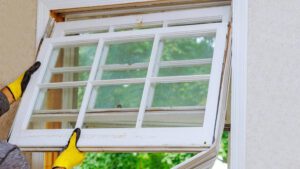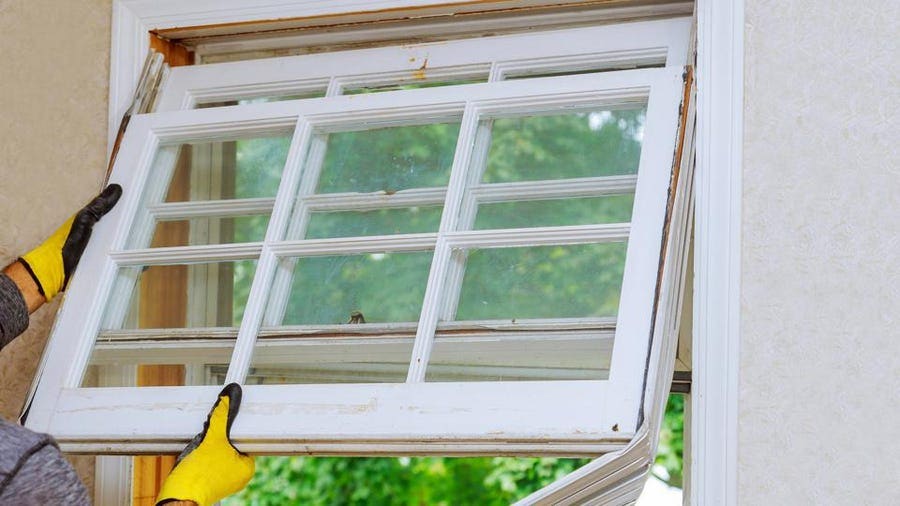A rotting window frame compromises the structural integrity of your home and can lead to a variety of problems. Replacing a rotting window will eliminate any potential for further damage to your home’s structure and walls.
Choose Window Replacement that matches your home’s style and functionality needs. Learn about window options and installation before contacting a contractor for window replacement.
There are many different replacement window options to choose from based on how and where your windows are used in your home. The style you choose will also have an impact on your home’s energy efficiency, as some window styles are more efficient than others. The type of windows you pick can also have an impact on your home’s aesthetic, and it’s important to consider what will work best with the architectural style of your home.
There are several reasons to replace your windows, including:
Older Window Frames
If your window frames are in poor condition, full frame replacement may be necessary. This method involves removing the existing interior and exterior trim, as well as the siding around the frame, to install new windows with a nailing fin that attaches to the exterior sheathing of your house. This is the best option for replacing older windows when the existing frames are rotting or sagging, and it’s also the only way to replace windows in newer homes that have a brick mold around the frame instead of traditional wood siding.
Outside Noises
If you have problems with outdoor noises, double- or triple-pane insulated windows with gas between the panes can help reduce these sounds and make your home more quiet. Poor Window Operation
If you find that your windows are difficult to open and close, it’s a good sign that they’re past their prime and need to be replaced. This can also be a sign that moisture is leaking into the frame, which can lead to mold and mildew if not addressed promptly.
Lastly, it’s a good idea to replace your windows when they become damaged or broken beyond repair, such as if the sash is warped and doesn’t close properly anymore. You’ll also want to replace your windows if they’re outdated, which can improve the value of your home and increase its ROI if you decide to sell it in the future.
Flush Flange
A flush flange is a flat exterior fin that sits underneath the frame to prevent damage to stucco and drywall during window replacement. Also called a Florida or Z-Bar Frame, a flush fin frame is the best option for replacing windows in existing homes while preventing damage to interior dry wall and stucco exterior finishes.
This style of frame is similar to an old fashioned milled wood cladding, except it comes in vinyl and metal. It is a good choice for those looking to match the style of their original home and avoid the hassle of having to redo the stucco or drywall around each new opening.
The term “flange” is often used incorrectly to describe the nailing fins or flanges that are installed on each side of the frame. The purpose of these flanges is to secure the window to the wall sheathing and hold it in place while the shims are being installed. The flanges also work in conjunction with the flashing and WRB to help prevent water, wind and weather infiltration.
When installing a frame with integral nailing fins, you should always make sure that the back side of the flange is sealed to the wall with an exterior grade waterproof sealant such as silicone caulk. The sealant needs to be able to expand and contract along with the shims and screws that are being installed. This helps to create a strong and waterproof barrier around the entire window.
A neoprene sealant such as Neoprelle® can be used to ensure that the shims are being installed properly and are holding the window securely. The use of neoprene can help to minimize leaks and improve performance during future maintenance.
Occasionally, a homeowner may find that the nailing fin is not tall enough to accommodate the shims and frame-screws. If this is the case, there are several solutions that can be tried. One option is to add a spacer to the shims in order to raise them. This is a relatively easy solution and can usually be completed in about 15 minutes. Another option is to shim the flange in order to increase its height. This is a more involved process, but it can also be done fairly quickly. If neither of these solutions are successful, it might be necessary to replace the nailing fin.
Insert
Window inserts are a great option for homeowners who want to transform their home, but don’t wish to do so by removing the existing frame. They allow the installation of a new replacement operating window within the current frame of the opening, and are also known as pocket windows.
During an insert window installation, your contractor will remove the interior and exterior stops and any interfering trim around the windows, and then they’ll insulate and air seal any gaps left behind. They’ll then install the new window and sash in the existing frame opening, with no need to build or replace any new framing or sills.
Because they’re designed to fit into the existing window frame, the glass surface area of a window insert will be smaller than a full-frame replacement. If you have old wood framed windows with a large window glass area, this may not be an issue, but if you have older aluminum or vinyl framed windows, it could mean less natural light.
Another drawback of insert replacement windows is that you can’t swap the existing frame type out for a different one. This isn’t a problem if your current frame is in good condition, but if it has shifted or warped over time, it can make fitting the replacement window into the opening difficult and lead to problems such as water leaks or air infiltration.
Like full-frame replacement, it’s important for your installer to be experienced with this type of project. If they’re rushing through the work or attempting to cut corners, it could lead to issues with performance and safety, especially if you live in an older home with a wooden frame that needs to be treated for moisture or other conditions.
It’s also not a good idea to try a DIY window replacement, even if you have experience in general construction and are handy with tools. Attempting DIY window installation can void your warranty, which means you’ll be responsible for any performance failures or mechanical issues that develop down the line. It’s also much more likely to result in an improper installation, which can negatively impact the energy efficiency of your windows.
Energy Efficiency
Depending on your home’s climate, you may be able to realize significant savings with energy efficient windows. Using Energy Star-certified double-pane windows in place of older single-pane windows with new frames can cut your monthly power bills by 7% to 15%. This makes energy efficiency one of the best window upgrades you can make.
Energy efficiency is also a factor in selecting the frame material for your replacement windows. Some frames are better insulators than others, such as vinyl and fiberglass. You should choose a frame material with a good R-value, which is the measure of a material’s ability to resist heat transfer. You can find these ratings on the NFRC label, which is applied to all new windows.
The number of window glass panes, the amount of insulation used and other features affect the overall price of a replacement window. For example, a double-pane, Low-E, wood-clad window is more expensive than an ordinary double-pane window, but it also provides better energy efficiency.
You should also consider the cost of installation when comparing different replacement windows. A professional installation will ensure that your new windows are properly sealed and airtight, which will reduce energy costs and extend the life of your HVAC system. If you plan to do the installation yourself, consider the equipment and materials required, such as a power drill, pry bar, utility knife, hammer, scraper, putty knife, caulk and paint.
If you’re looking for an even more energy efficient option, a window with argon gas fill between the glass panes will provide further insulation. This will keep the interior of your home warmer in winter and cooler in summer, cutting your energy costs significantly.
Keep in mind that more heat enters your home through attic hatches, recessed light fixtures and fireplaces than through your windows. It’s more cost-effective to invest in additional home insulation and weather stripping before you consider replacing your windows with more energy-efficient models.
